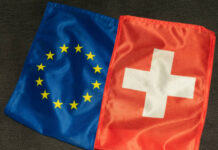In a fairly quiet week equities edged modestly higher, and a barrel of crude oil traded back above USD 85. Along a hawkish Norges Bank twist this supported NOK while more pricy oil weighs on JPY which continues to weaken. Japan’s top currency diplomat stressed that there is no limit to FX intervention resources. We are probably just a small JPY sell-off away from the government stepping back in to prop up the JPY.
In bond markets, we have seen some intra-euro area spread tightening after the knee-jerk reaction last week when French president Macron called a snap election. On Friday, the French-German yield spread was still about 25bp wider than ahead of the EU parliament election, though. The EU Commission put France and Italy, among others, into Excessive Deficit Procedures, a disciplinary tool, which has, until now, been suspended since the pandemic. The respective governments will now need to come up with proposals on how to improve public finances.
We had several central bank meetings on the agenda this week. While Norges Bank adjusted their rate path higher on inflation worries, the SNB opted for another rate cut after they kicked off the global cutting cycle back in March. This leaves the policy rate at 1.25% and reflects the significant CHF strengthening through the recent month. With UK core inflation at 3.5% in May and particularly service prices continuing to move too fast, it was no surprise that the Bank of England kept the bank rate unchanged at 5.25%.
Euro area PMIs released Friday were weaker than expected, which drove 10-year Bund yields 5bp lower and weakened the euro a bit. The service sector recovery slowed, and the manufacturing recession accelerated after we had seen positive signs on that front for a while. Also worth noting, the index for output prices in the service sector took another leg lower. It has been a good indicator for core price pressures in the euro area. The German ZEW survey continues to signal a dire assessment of the current economic situation, whereas expectations are much more promising.
Also, Japanese PMIs were weak as the service sector cooled significantly. At the same time core inflation ticked back below 2% as price pressures remain very muted. This is not what the Bank of Japan wants to see before embarking on further rate hikes. Elsewhere in Asia, Chinese May data paint a picture of a still fragile economy with the housing crisis remaining a key drag on demand. After a strong start to the year, production seems to have lost some momentum.
Next week, we will zoom in not least on France as they release some of the first euro area inflation data for June on Friday along Spain and Italy. The first round of the French National Assembly elections kicks off the following Sunday. The most likely scenario is a “hung parliament”, which would imply that the worst fears in markets of large spending increases should diminish. We will probably have to wait until the second round the following Sunday for the final results, though.













